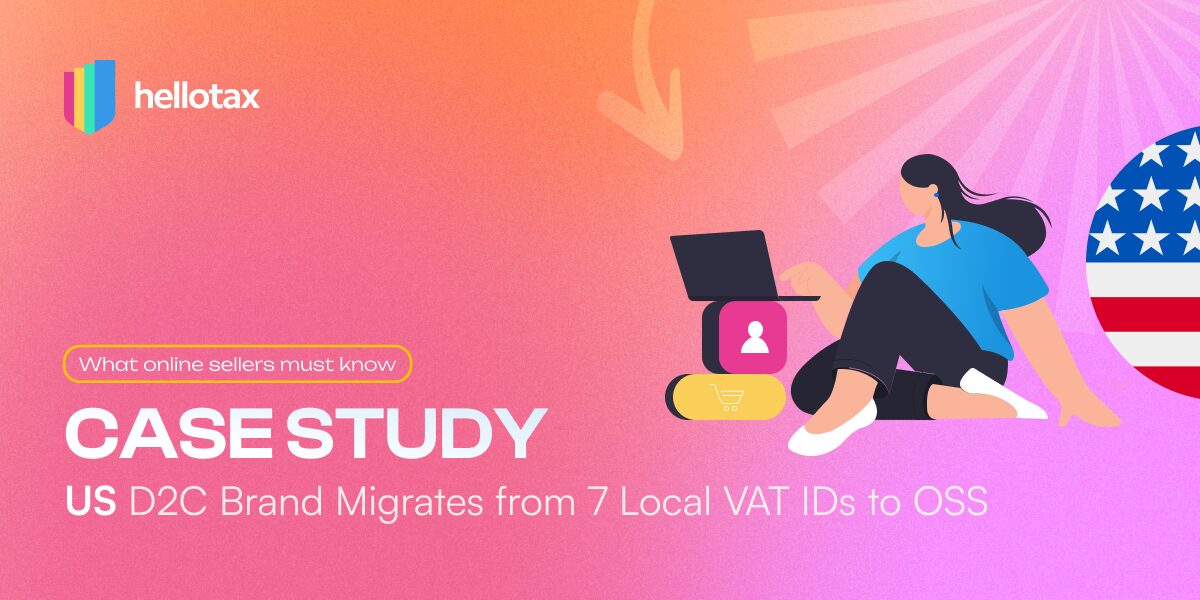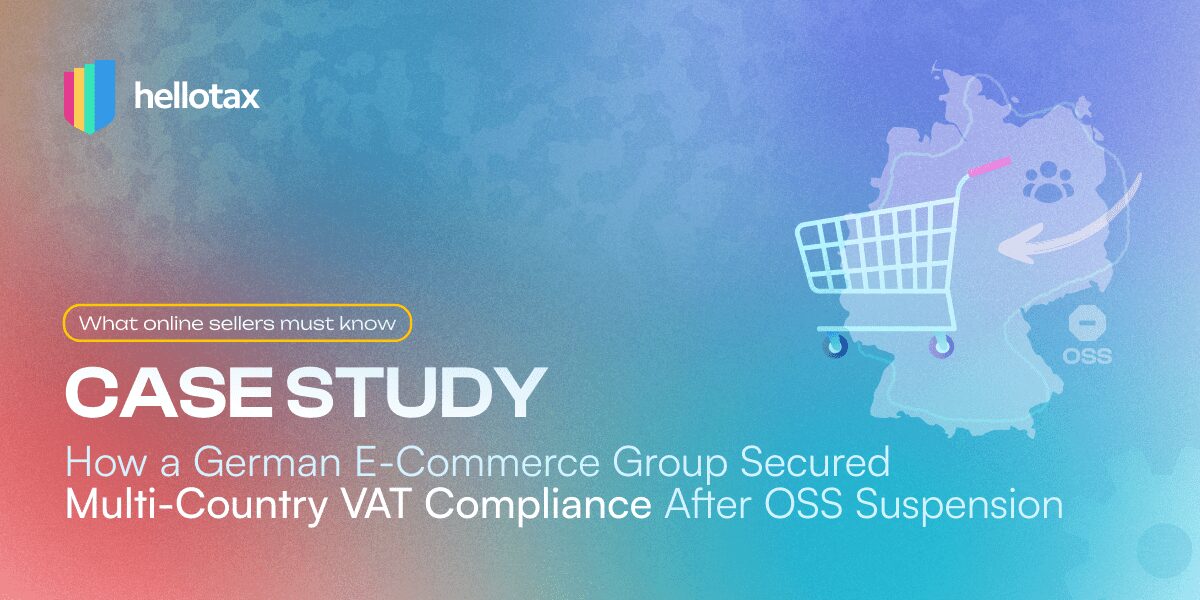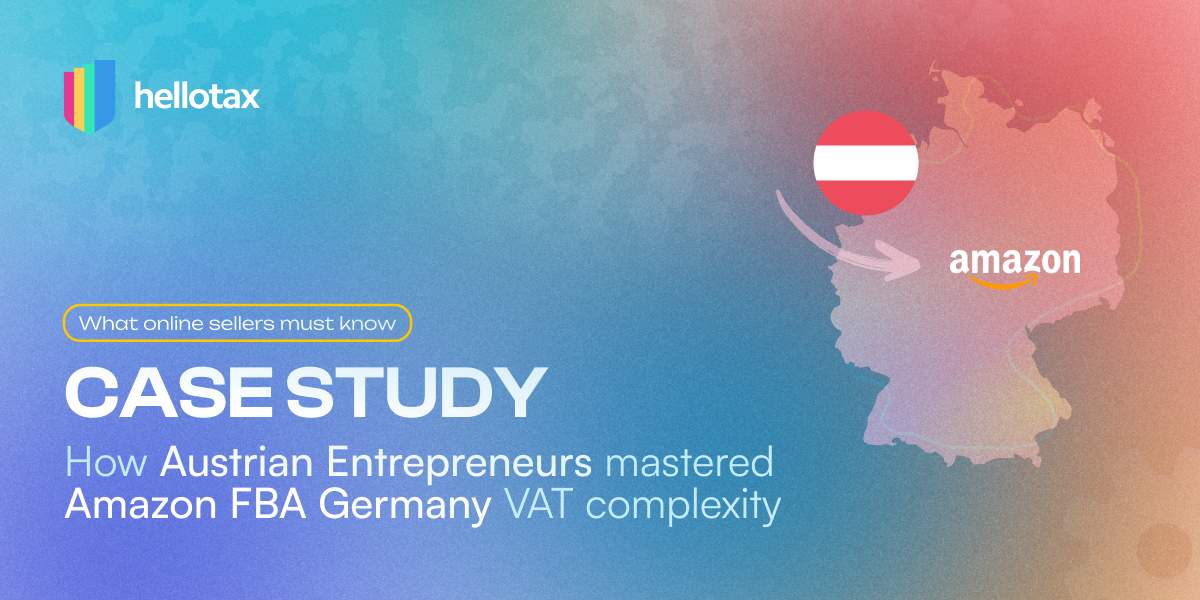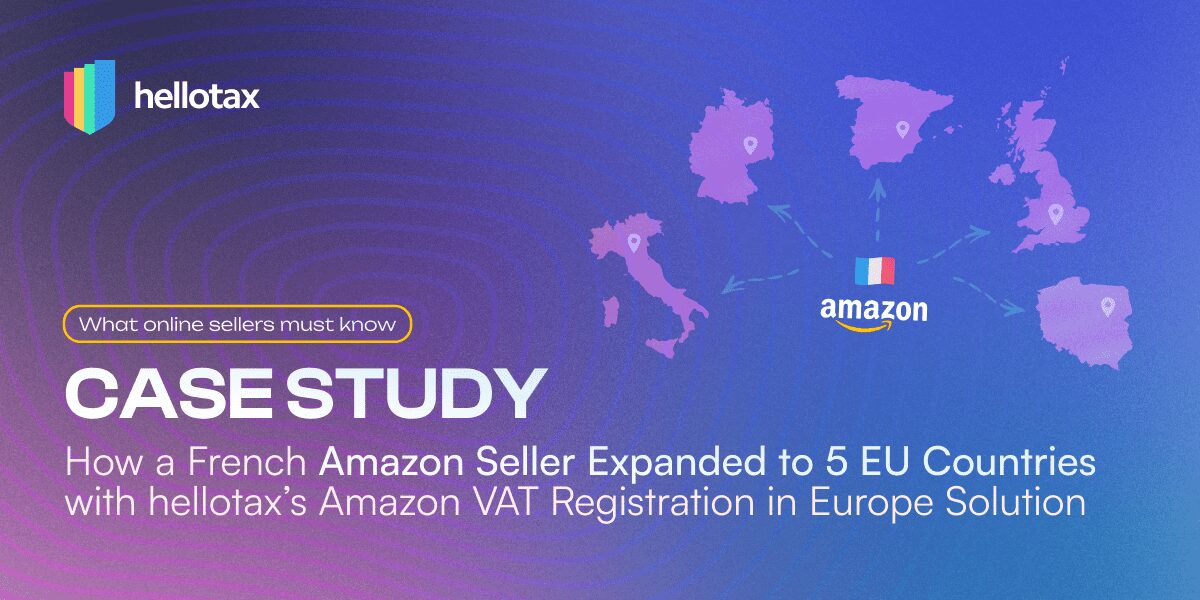EU OSS VAT for US sellers can be complex—especially when transitioning from multiple local VAT registrations to a single One-Stop Shop setup.
In this case study, we show how a US-based e-commerce brand selling physical goods through its own website successfully moved from seven separate VAT filings to a centralised OSS model with hellotax.
The brand achieved full compliance, reduced filing costs, and simplified cross-border VAT management across Europe.
Brenda Varela
Last Updated on 31 October 2025The Client: US D2C E-commerce Brand Preparing for EU OSS VAT Compliance
A direct-to-consumer brand from the United States sells physical goods exclusively through its own website.
Before working with hellotax, it held VAT registrations in seven countries—Germany, Netherlands, Czechia, United Kingdom, Spain, France, and Italy—which made monthly filings time-consuming and expensive.
To simplify compliance, the company wanted to switch to the EU OSS VAT system and deregister local VAT IDs where possible, while keeping June and Q2 filings on schedule.
👉 This migration is a great example of how EU OSS VAT for US sellers can reduce workload and streamline cross-border operations.
The Challenge: EU OSS VAT for US Sellers — File Now, Simplify Next
The business faced a dual challenge:
-
Immediate compliance — ensuring VAT filings in all seven countries were correctly submitted in July for the June/Q2 period.
-
Strategic migration — registering for Union OSS in Czechia while maintaining local filings until deregistration could safely occur.
Additional challenges included:
-
Managing import VAT deductions and preventing double reporting.
-
Determining where fiscal representation was required.
-
Keeping UK compliance separate from EU OSS due to Brexit differences.
Successfully navigating EU OSS VAT for US sellers means balancing short-term compliance with long-term simplification.
New to OSS? In short, the One-Stop-Shop lets you report eligible cross-border B2C EU sales in one return, but it doesn’t cover domestic sales or stock stored locally. For a quick refresher, see: One-Stop-Shop (OSS) Explained.
The Solution: How hellotax Simplified EU OSS VAT for US Sellers
hellotax designed a phased compliance plan for the company to maintain short-term accuracy while building a long-term OSS structure.
1. Rapid VAT Takeover
hellotax took over filings in DE, NL, CZ, UK, ES, FR, and IT, aligning periods and preventing reporting gaps.
📌 This step is crucial in any EU OSS VAT for US sellers migration strategy.
2. OSS Registration in Czechia
The team handled the Union OSS registration, allowing future B2C distance sales to be reported under OSS rather than locally.
3. Deregistration Management
After OSS activation, hellotax coordinated deregistration in non-essential countries, keeping filings active where local stock or domestic sales required it.
4. Import VAT Handling
Through the hellotax dashboard, import VAT documentation was uploaded and reconciled to ensure no double taxation and accurate offsetting.
5. Central Dashboard & Audit Readiness
The client gained a single interface to monitor deadlines, filings, and correspondence with EU tax authorities.
Before switching to OSS, every seller must first complete EU VAT registration in at least one Member State. This registration gives your business a valid VAT ID needed for OSS and cross-border reporting. Learn more in: EU VAT Registration.

Book a free consultation
Our VAT experts are happy to help you. Book a free consultation today!
Implementation Timeline and Results
-
Week 1–2: Onboarding and seven-country VAT takeover
-
Week 2–4: OSS registration in Czechia filed and activated
-
Month 2–3: Deregistration of unneeded VAT IDs
-
Ongoing: OSS quarterly filings + any required domestic returns
📌 This timeline illustrates a structured approach to implementing EU OSS VAT for US sellers without disrupting operations.
Results
-
✅ Zero missed deadlines: June & Q2 filings submitted on time in all seven countries.
-
✅ Simplified reporting: Union OSS (CZ) activated for eligible intra-EU B2C distance sales.
-
✅ Lean footprint: Local VAT IDs deregistered where appropriate; obligations retained only where legally required.
-
✅ Cash flow protection: Import VAT consistently reclaimed/deducted with proper evidence—no double tax.
-
✅ Lower admin load: One central dashboard, one account manager, and clear rules for when to use OSS vs. local returns.
For more details on EU OSS VAT requirements, visit the European Commission’s OSS page.
Lessons Learned for Non-EU D2C Sellers
-
File first, migrate second. Lock current-period filings, then roll out OSS.
-
OSS isn’t everything. Domestic sales (e.g., from local stock) and UK remain outside OSS.
-
Evidence wins. Keep import VAT docs, transport proofs, and clean invoice logic.
-
Plan deregistrations deliberately. Close local IDs only when business flows and stock positions allow.
-
Centralise data. A single system prevents double reporting between OSS and local returns.
Strategic Advantages of EU OSS VAT for US Sellers
EU OSS VAT for US sellers offers more than just filing simplification—it also provides a competitive edge. By centralizing VAT reporting, US-based D2C brands can accelerate EU expansion without the administrative burden of maintaining multiple local tax accounts. This allows for faster market entry, better pricing transparency, and reduced compliance risks. Businesses that make the switch early often find it easier to scale across Europe while maintaining full VAT compliance.
Related hellotax resources
Common VAT Mistakes in the EU.
What hellotax Delivered
-
VAT filings takeover in DE, NL, CZ, UK, ES, FR, IT
-
Union OSS registration in Czechia + quarterly submissions
-
Deregistration management where feasible (final returns included)
-
Import VAT document workflow and reconciliation
-
Ongoing compliance with a unified dashboard and local experts

Book a free consultation
Our VAT experts are happy to help you. Book a free consultation today!
Key Takeaway
Migrating to EU OSS VAT for US sellers can dramatically reduce filing complexity—but only when done in the right sequence: stabilise local returns, activate OSS, and deregister strategically.
With hellotax’s automated tools and expert local support, US sellers can expand in Europe confidently and stay fully VAT compliant.
Book a Free Consultation
Ready to consolidate multi-country VAT into a cleaner OSS-first model—without missing a single filing?
👉 Book a free consultation and get your personalised migration plan.
Related Posts
-
Case Study: How a German E-Commerce Group Secured Multi-Country VAT Compliance After OSS Suspension
hellotax supports sellers when EU VAT compliance gets complex — covering multi-country VAT compliance, backdating,…
-
EU VAT vs. OSS VAT
Many of you have been asking us the questions: "What is the difference between EU…
-
Case Study: How Austrian Entrepreneurs Mastered Amazon FBA Germany VAT complexity
Discover how an Austrian couple scaled their Amazon FBA business in Germany and beyond while…







Leave a Reply